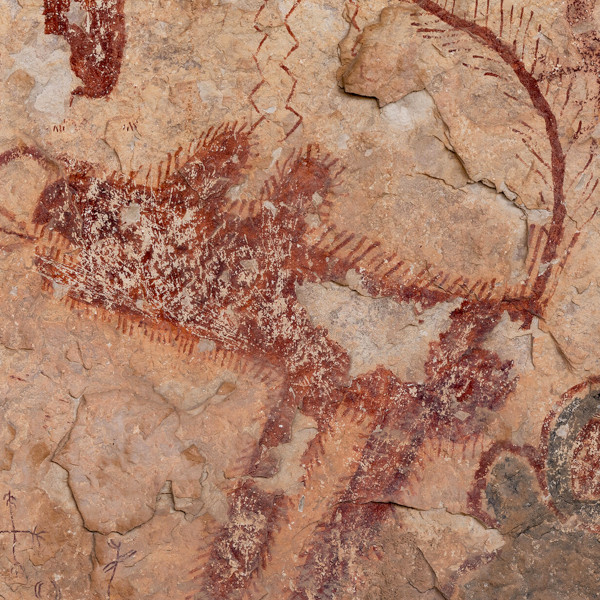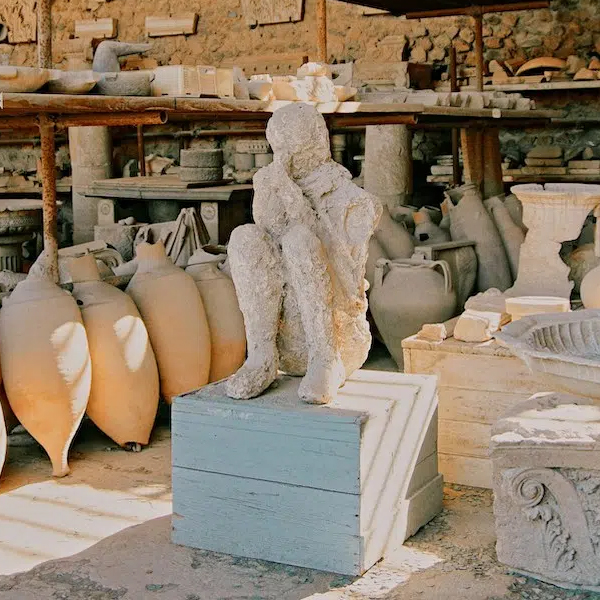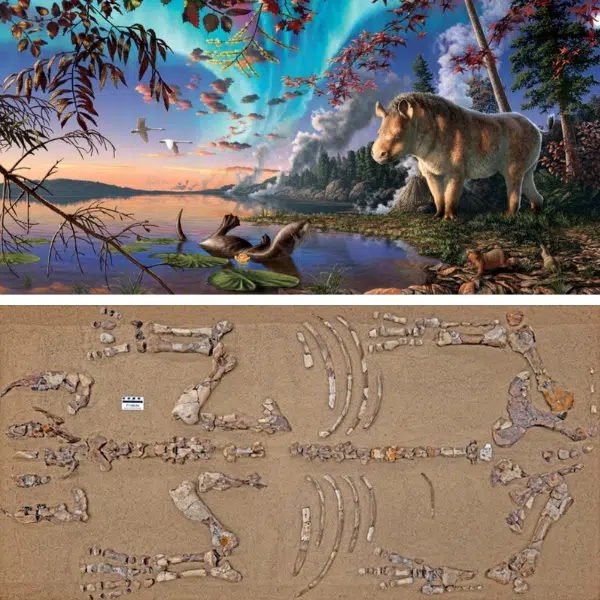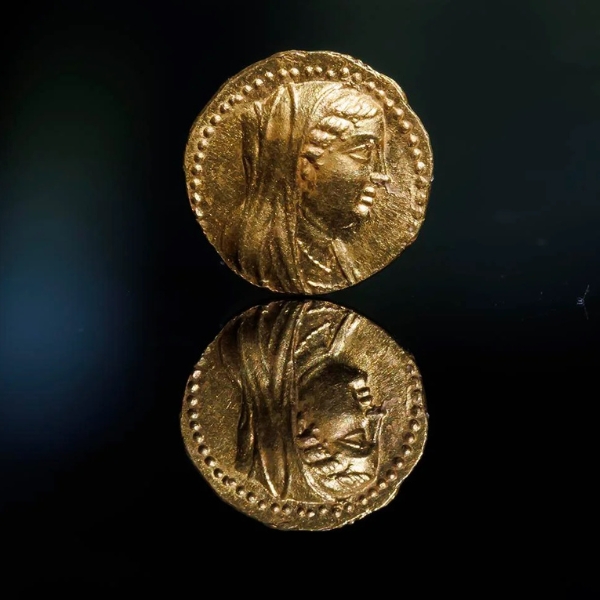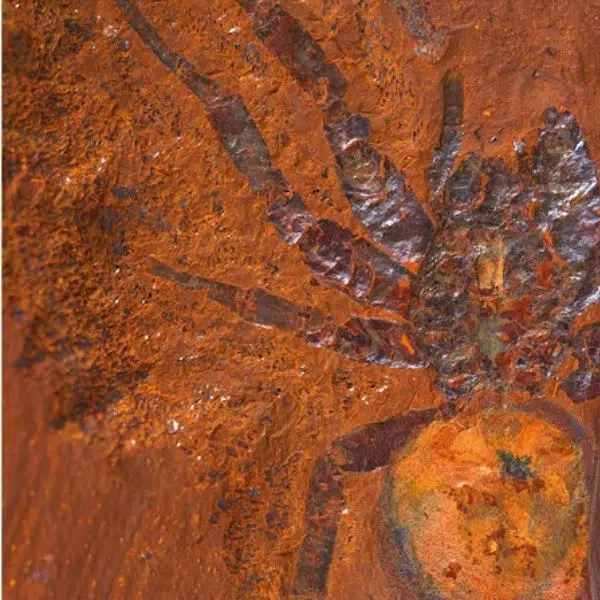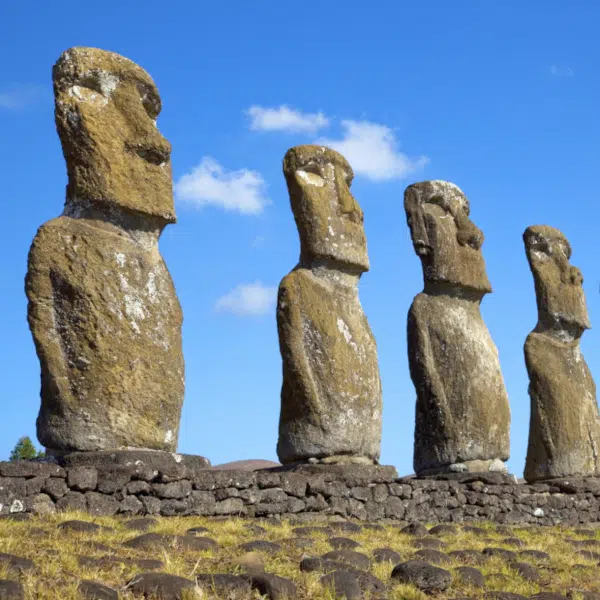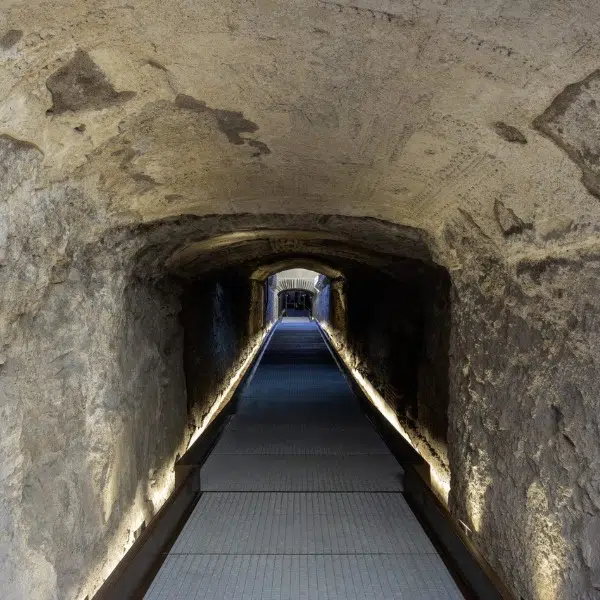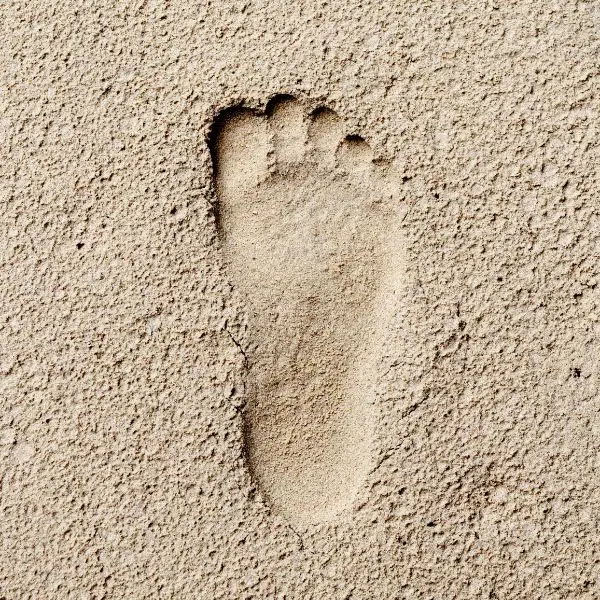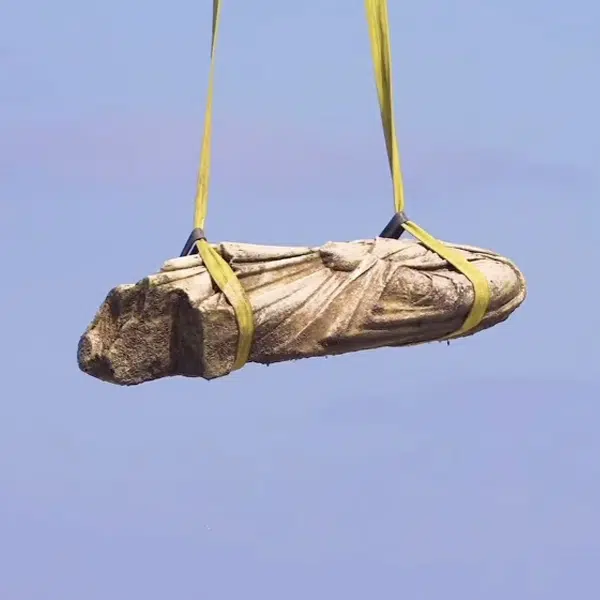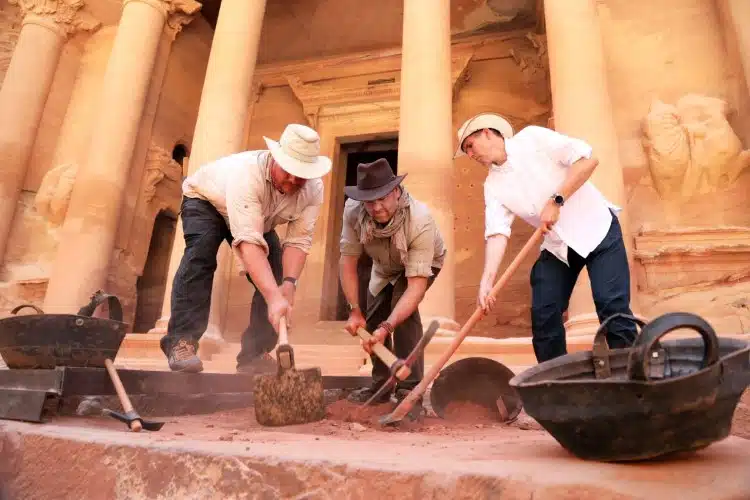
Photo: Discovery’s Expedition Unknown
The prehistoric city of Petra in southwestern Jordan was once the cradle of the ancient Nabataean civilization. The centerpiece of this capital is the iconic Treasury, carved directly into the pink sandstone cliffs. Made famous after being featured in 1989's Indiana Jones and the Last Crusade, it's also known as Al Khazneh and draws millions of visitors annually. While archeologists have long suspected that ancient tombs laid beneath this monument, it wasn't until earlier this year that they gained permission to dig, and what they found was incredible.
A group of Jordanian and American researchers, led by Dr. Pearce Paul Creasman, executive director of the American Center of Research, went below the surface and discovered a tomb dating back at least 2,000 years filled with artifacts and at least 12 human skeletons. Incredibly, everything was also caught on film, as Dr. Creasman had contacted Josh Gates of Discovery's Expedition Unknown to join the team. In fact, the groundbreaking excavation is covered in a two-part episode that premiered on October 9.
“We were absolutely stunned by the revelation of this hidden chamber,” says Gates. “Since nearly all of the tombs at Petra have been found empty, this is perhaps the most significant tomb ever found at Petra and a discovery of historic proportions. The breakthrough could not only reveal the secrets of The Treasury above, it could also offer an extraordinary glimpse into the lives of the early Nabataeans who built Petra.”
Before breaking ground, Dr. Creasman had received permission to use a remote-sensing radar in order to see if any objects were detected under the Treasury. Conducted earlier this year, that survey produced positive results and allowed the team to get the go-ahead from the Jordanian government to dig.
Excavations began in August and the team couldn't believe what they discovered once they entered the tomb. The artifacts, which include ceramics and other goods made from bronze and iron, give unique insight into the Nabataean civilization. These clues are precious, as archeologists don't often find items that tell them much about the daily lives of these powerful desert nomads. The human remains are also quite impressive, with researchers believing it may be the largest collection of such remains found in one location in Petra.
“There is so much that we have yet to learn about The Treasury,” shares Dr. Creasman. “When was this remarkable structure built, and why? Little did we know that this dig might completely change what we know about The Treasury and help solve the mysteries of the Nabataean people. With the support of the Jordanian government, this excavation is bringing us closer than ever to answers.”
Archeologists in Petra have discovered a hidden tomb filled with human remains below the iconic Treasury.
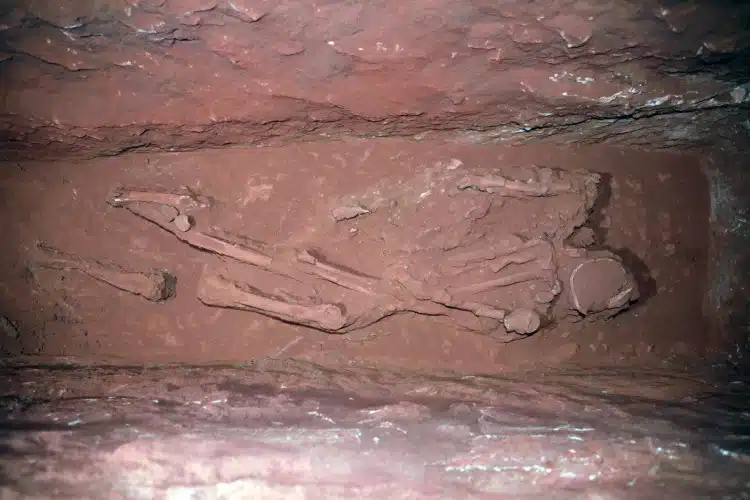
Nabatean Skeleton buried beneath The Treasury of Petra. (Photo: Discovery’s Expedition Unknown)
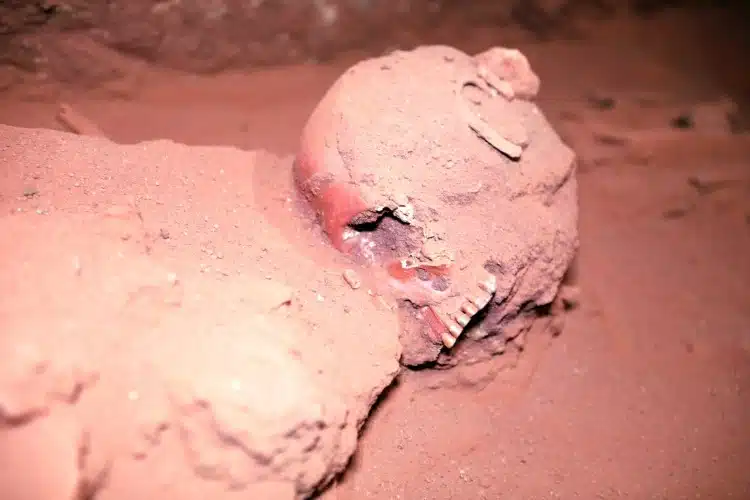
Skull of Nabatean buried beneath The Treasury of Petra. (Photo: Discovery’s Expedition Unknown)
Cameras were on hand for the excavation, which is featured in a two-part special on Discovery's Expedition Unknown.
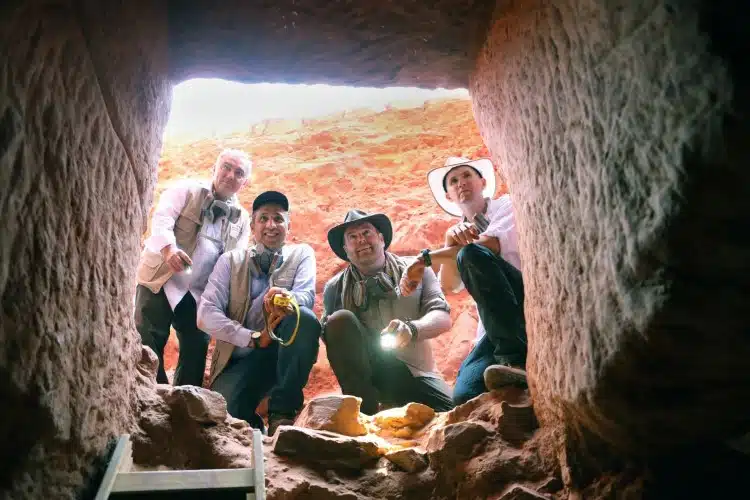
Explorer Josh Gates and Professor Pearce Paul Creasman, joined by Dr. Fares Braizat, Chief Commissioner of the Petra Development and Tourism Region Authority and Professor Fadi Balawi, Director General of the Department of Antiquities of Jordan, peering into the newly discovered tomb at Petra. (Photo: Discovery’s Expedition Unknown)
h/t: [CNN]
All images via Warner Bros./Discovery.
Related Articles:
13,600-Year-Old Mastodon Skull Discovered in Iowa Riverbank
Hidden Tunnels Discovered Under 1,500-Year-Old Church in Istanbul
Archeologists Uncover Neolithic Stone Tomb With Hugging Skeletons in Scotland
Researchers Rediscover Lost Egyptian Tomb With 4,400-Year-Old Mummy Inside











































































